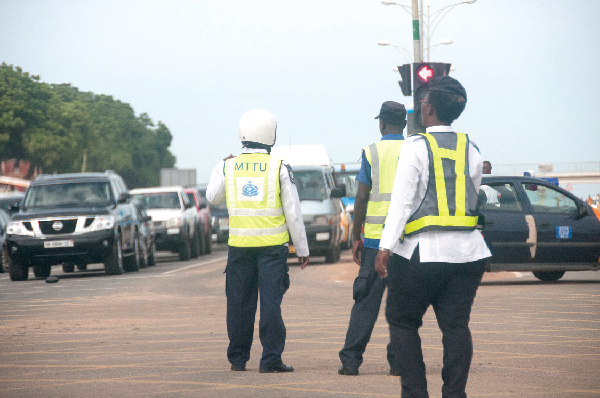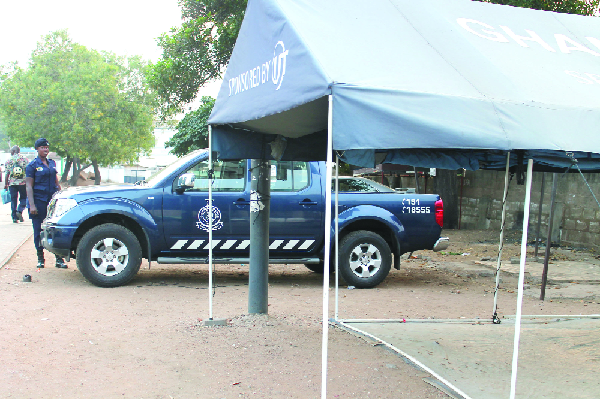Police units: Responsibilities and duties
 More often than not members of the public are unable to tell the differences between the various police units and personnel who operate in our cities and on the highways.
More often than not members of the public are unable to tell the differences between the various police units and personnel who operate in our cities and on the highways.
Advertisement
There is, therefore, the tendency for the public to think that the police personnel they encounter on the streets, the highways and the barriers, are all personnel of the Motor Traffic and Transport Unit (MTTU) of the Police Service.
The truth is that they are of different units with different specialties. They are out there to perform distinctive functions from each other, though all aimed at achieving the same objective of maintaining law and order.
Within this large seemingly indistinctive array of personnel are the MTTU, Highway Patrol Unit (HPU), Barrier Duty Men and officers of the Visibility Patrol Department. Personnel of these units are usually distinctively attired, with peculiar insignia and colours.
While all these shades of police officers have basic training in law enforcement and for that matter can function everywhere, for the purpose of specialisation and efficiency, there is division of labour. They are also given further training to perform specific duties.
Consequently the functions of the MTTU personnel are different from those of the Highway Patrol Unit, while the barrier duty officers perform quite a distinctive duty from that of the Visibility Patrol Officers. The MTTU is the unit mandated by law to enforce road traffic regulations.
What marks MTTU personnel out is their outfit. They are usually in their trademark white tunic over a pair of black trousers with white combo or sergeant cap with white top to match.
Personnel of this unit, who have additional training in Road Safety, are usually deployed in city centres, traffic intersections, places prone to traffic congestions and sometimes on the highways.
The functions of the MTTU include:
• management of traffic,
• enforcement of traffic regulation,
as stipulated by the Road Traffic
Act/2004.
• inspection of documentation of
vehicles and motorists.
They are mandated to check motorists for such offences as drink-driving, speeding, dangerous driving, and non-observance of road signs.
 While managing traffic to prevent or ease congestion, MTTU personnel also inspect documentation of vehicles and motorists to ensure that they are genuine. All these are underpinned by their overriding concern about safety on the road.
While managing traffic to prevent or ease congestion, MTTU personnel also inspect documentation of vehicles and motorists to ensure that they are genuine. All these are underpinned by their overriding concern about safety on the road.
At present, road traffic offenders are arrested and processed for court for determination, pending the implementation of the spot fine regime.
On the other hand, the Highway Patrol personnel are deployed on the highways and other roads to prevent or combat crime generally. They are attired in their operational uniform with the symbol of their unit on their chest. They usually use marked vehicles with the inscription “Highway Patrol Unit”, and are adequately armed to combat violent crimes.
The responsibilities of the HPU are:
• preventing and
combating violent
crimes like robbery
on the highway
• providing
general security on the highway
• checking transportation of arms
and ammunition, narcotics,
uncustomed goods, and other
offences.
• checking movement of
criminals on the highways and
Advertisement
other roads.
• preventing and stopping all
crimes on the roads.
The HPU also come in handy as first-line respondents in case of motor accident on the highway, before the arrival of the MTTU.
It is not the responsibility of the HPU to check documentation and the condition of vehicles, but they may do so when necessary.
In the case of personnel at Police Barriers, they are there to search vehicles for certain offences.
Advertisement
They perform duties like:
• looking out for and arresting
criminals
• checking illegal movement of
persons and goods
• arresting escaping criminals
• intercepting stolen vehicles and
items
• intercepting arms, narcotics and
other contraband goods
Advertisement
Though they may also check dangerous practices like over-loading by drivers, it is not their duty to inspect documentation.
The newest addition to these seemingly related units is the Visibility Patrol Department. They are a unique group of police officers who perform a different job altogether.
The philosophy which drives this unit is to make police visible and accessible in the communities to prevent crime. They are unique in their appearance, as they wear a reflector vest with the inscription “POLICE PATROL” boldly printed at the back over the official working uniform. This is to make for easy visibility and identification for accessibility.
Personnel of this department are deployed to intersections, business districts, shopping malls and other vantage points within the city. They either stand still, observe things or walk their beat within a specified radius. While there, they may also receive complaints from the public. It is not the responsibility of Visibility Patrol personnel to inspect the documentation of vehicles and motorists.
There is also the phenomenon of snap check, where barriers are erected at random at odd places to check the movement of vehicles, and sometimes people. This is carried out both day and night by patrol teams and is done to check the identities of occupants of vehicles against wanted criminals, and items being transported.
This means the spots for snap checks are not permanent. Officers are not supposed to check documents, except when they have cause to suspect the commission of a crime involving the vehicle.
It is important that members of the public are well informed about these differentiations, so that they would understand the activities of the various officers they encounter in their day-to-day interaction with the police.
The Police Administration in its efforts to ensure that personnel deliver the best of services to members of the public, has put in place measures to check the problem of unprofessional conduct occasionally exhibited by some personnel in their service delivery.
These measures have impacted positively on professional practices. For instance, over the past couple of years (from 2011 to June 2013) disciplinary actions have been taken against some personnel of the service for their involvement in various acts of misconduct. For example, while 108 officers of the service were dismissed, 132 of them were reduced in rank for various acts of misconduct during the period.
Furthermore, 239 personnel have suffered other punishments. In addition to this, 433 policemen and women are on Service Enquiry for having misconducted themselves.
In the continuous efforts of the Police Administration to bring the service to the level of international best practices, we urge members of the public to continue to partner the police service for improved co-operation and collaboration.
The writer is a Deputy Commissioner of Police (DCOP) and the Director-General in charge of Public Affairs of the Ghana Police Service.
By David Nenyi Ampah-Bennin/Daily Graphic/Ghana




